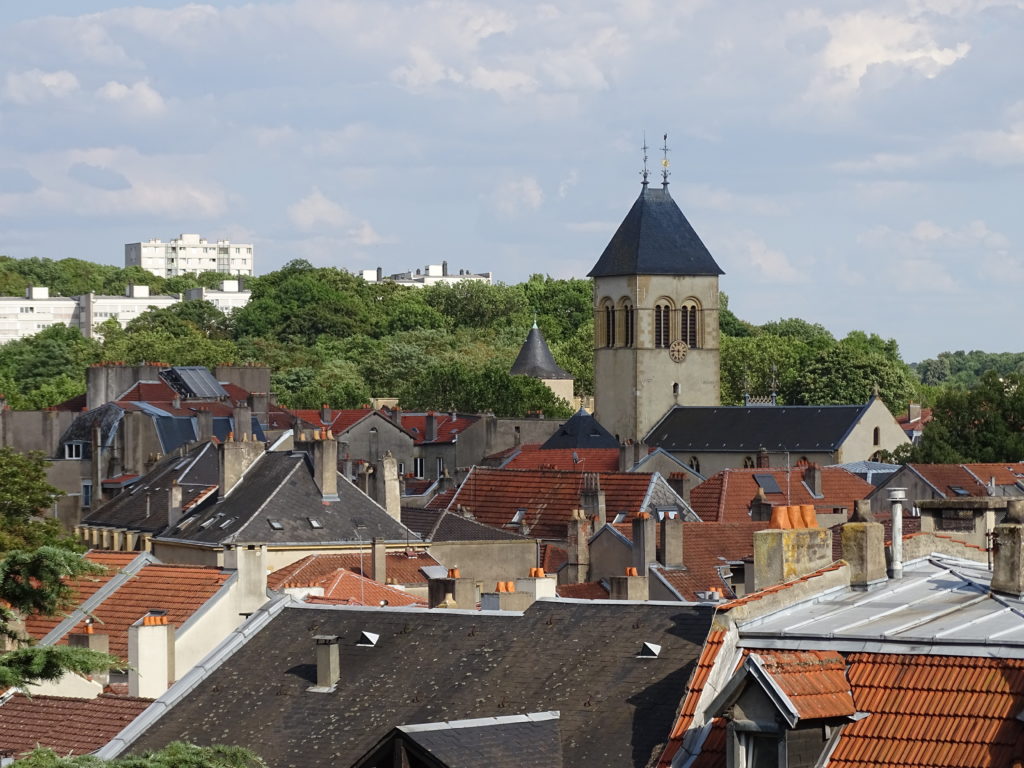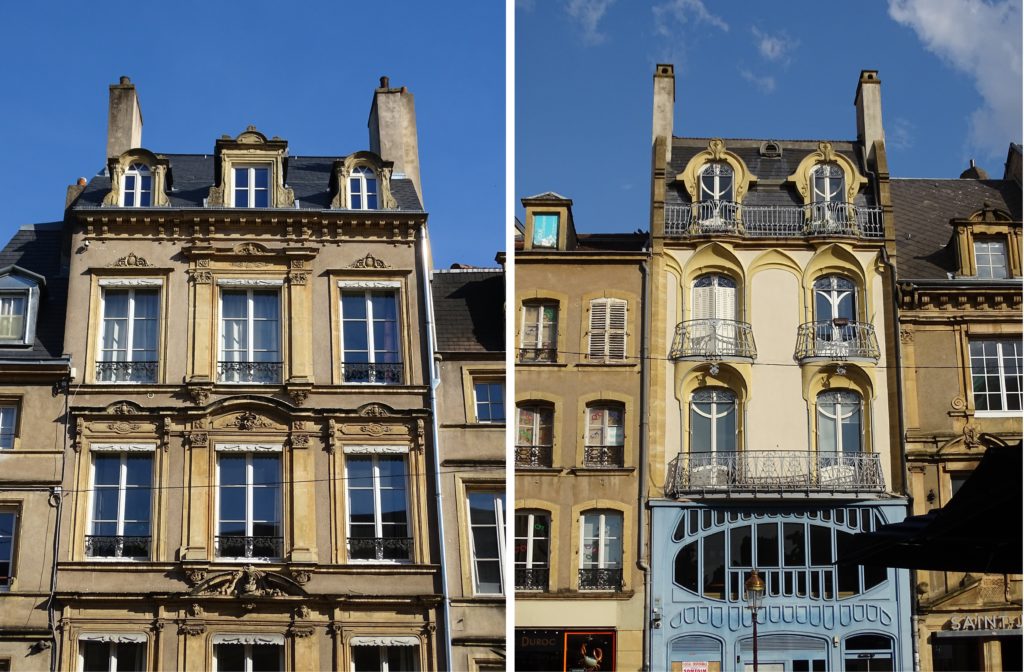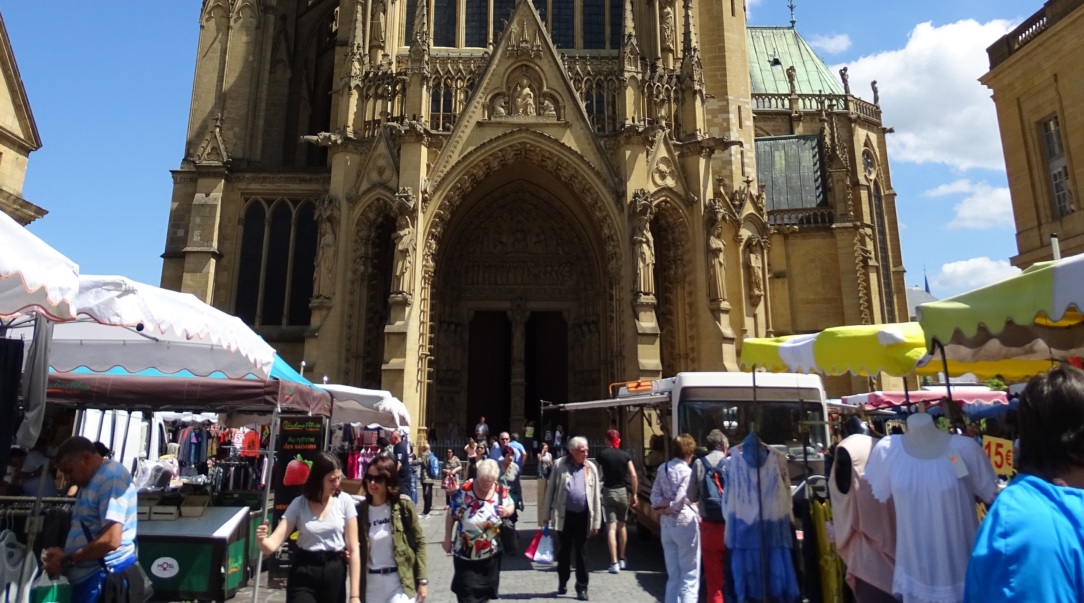Metz Agglomeration (France) : Why So Many Underexploited Assets?
This beautiful city, whose first settlements date back to 3000 years before our era, is full of architectural, cultural and industrial richessness. It is located at the crossroads between the French Lorraine region (an agricultural and industrial territory1) and Luxembourg (a country specialized in banking and insurance, 64 km from Metz), the south-east of Belgium and finally Germany (leading European economic power). Today, the Eastern French Fast Train2 (connects Metz in 1h15 to the city of Paris or the its suburbs of (Marne-la-Vallée, Massy, Charles-de-Gaulle Airport).
The city of Metz, through the dramas of three wars3, has benefited from both French and Germanic cultural contributions.

The architecture of the city center and the railways station, with its square volumes and somewhat massive foundations, attest to this influence of the East, which is quite adapted, it must be admitted, to semi-continental climates, including snowy episodes of several months that the Lorrainers still had to face in the 1950s.



The recent district of the Amphitheater, located next to the train station, with the original if not futuristic construction, the Pompidou Center as well as office buildings nearby, demonstrate that architectural influences continue to operate in this growing city.
Metz and its agglomeration are made up of towns which are completely integrated into the city, with the example of Plantières4, and others which are still semi-rural, like the villages of Mey, Vantoux or Nouilly (located in the northeastern periphery of the city). Metz agglomeration develops demographically. In 2018, the urban area included more than 225,000 inhabitants5 (compared to just over 221,000 in 20136). In Nouilly, for example, upstream of the former railway line, a new district has been created, designed to accommodate dozens of new families willing both to gain ownership of their homes and to take up employment in the secondary or tertiary sectors, in the district of Metz.
In economic terms, in 2015, the new French région of Alsace-Champagne-Ardenne-Lorraine7, and in particular the départment of Moselle, suffered a decline in the diet, according to INSEE. Employment declined in the industrial, construction and trade sectors. In addition, the suppression of military centers has contributed to penalizing the territory8. However, between 1990 and 2015, the GDP of the Grand Est region grew by more than 13 points compared to that of Ile-de-France (58% against 45%).
Alas, even if one takes into account the GDP of the new region of the Great East (and not only Metz District GDP), the latter however represented only 7% of the National Gross Domestic Product, in 2015, against more than 30% for the Ile-de-France (or Paris agglomeration) region9 .
In terms of training, the agglomeration of Metz has many primary and secondary schools, both private and public. For higher education, several colleges, as well as alternating training centers, can provide different types of education and make the next generation ready in demographic10 as well as technological terms as well as technology, with the development of Internet applications and so-called Artificial Intelligence tools.
So why does a city with so many assets continue to be, despite both private and public efforts, a mid-sized provincial city? Why the population of the agglomeration does not exceed 300,000 inhabitants while this urban area could be a big hub of the European network? Why, even if one takes into account the GDP of the new region of the Great East, the latter however accounted for only 7% of the National Gross Domestic Product, in 2015, against more than 30% for the Paris region11? The answer, as already mentioned in my article on the risks and assets of the town of Jouy-en-Josas12 (Yvelines), located in the French Capital region, must be looked at the hypercentralization of France where the metropolis of the Capital concentrates 20% of the population, and 30% French GDP. The accumulation of political and economic powers in the Ile-de-France leaves a subordinate place to the provincial agglomerations, to the point that the journalists of the public channel France Info, in order not to upset the provincial elected officials, do not use anymore the word Province13 but the région(s) one, forgetting, however, that the Ile-de-France is also a region when it is not part of the French Province14.
1 Several factories and research centers, such as the car-maker Peugeot-Citroën one, participate in the Lorraine activity (which is part of the new region called Grand Est which goes from the Paris region eastern border to the city of Strasbourg).
2 Train à Grande Vitesse, région Est.
3The war of 1870, unleashed and lost in Sedan by Napoleon III, ended with the annexation of Alsace and Lorraine by the Germans and a war penalty that the French paid rubies on the nail, to resume a expression of the historian and urban planner Michel CARMONA. In 1918, at the end of World War I that ruined both belligerents, the two eastern regions returned to France before becoming German again in 1940 to finally be liberated from the Nazi yoke in 1945.
4Lantières Queuleu is today a district of the city of Metz.
5COMERSIS.COM, Metz Métropole, 1st january 2018, consulted on the 9th August 2019. [Available on] : https://comersis.com/Les-metropoles-de-France-2019-actualite-4.html#metz
6AST Dorothée, « Démographie 221 800 habitants à Metz Métropole [1st January 2013] » in Dossier Grand Est, INSEE, September 2016, p 8 et 9, consulted on the 9th August 2019. [Available on] : https://www.insee.fr/fr/statistiques/2129329?sommaire=2129339
7France territory is composed of several sub-divisions : régions, départements and communes. The régions are, in size, the equivalent of the Great Britain kingdoms (England, Wales, Scotland, Northern Ireland) and the départements the equivalent of the UK counties. In 2016, the number of the régions passed from 22 to 13, meaning that some saw their territory increased, like the Lorraine région which united with others and became the Alsace-Lorraine-Champagne-Ardennes (or Grand Est which means Greater East). cf: CARTES DE FRANCE, Les 13 nouvelles régions de France en 2016, consulté le 22 août 2019. [Available on:] http://www.cartesfrance.fr/geographie/cartes-administratives/carte-13-nouvelles-regions.html
8 AST Dorothée, « Contexte économique Une conjoncture économique plus difficile dans la région ACAL qu’au niveau national », in Dossier Grand Est, INSEE, September 2016, p 5, consulted on the 9th August 2019. [Available on]: https://www.insee.fr/fr/statistiques/2129327?sommaire=2129339
9Source : INSEE, Produits intérieurs bruts régionaux de 1990 à 2015, consulté le 10/08/2019. [Disponible sur] : https://www.insee.fr/fr/statistiques/1893220
10 Baby boomers have become Grand Dad boomers.
11Source : INSEE, Produits intérieurs bruts régionaux de 1990 à 2015, consulted on the 10th August 2019. [aqvailable on] : https://www.insee.fr/fr/statistiques/1893220
12At the national level […] a lasting solution would be to really decentralize France. In Jouy-en-Josas Risks and assets, de FOUCAULD Bertrand, 2 july 2019, consulted on the 9th August 2019. [Available on] :
13The French word Province means any French Metropolitan territory which is not in the French Capital (Paris region). Thus, since at least the XVIIth century, there has been a kind of snobism among Paris region inhabitants and the Province people. Althought many French living in or around Paris dream about going and living in less stressfull and polluted cities.
14Everyone understands that the journalist [from France Info public radio station] has simply substituted the term “province” by the term “région”. Source : RADIO-FRANCE – LA MEDIATRICE, Terminologie province/région, the 13th February 2018, consulted on the 9th August 2019. [Available on] : http://mediateur.radiofrance.fr/message/terminologie-provinceregion/

